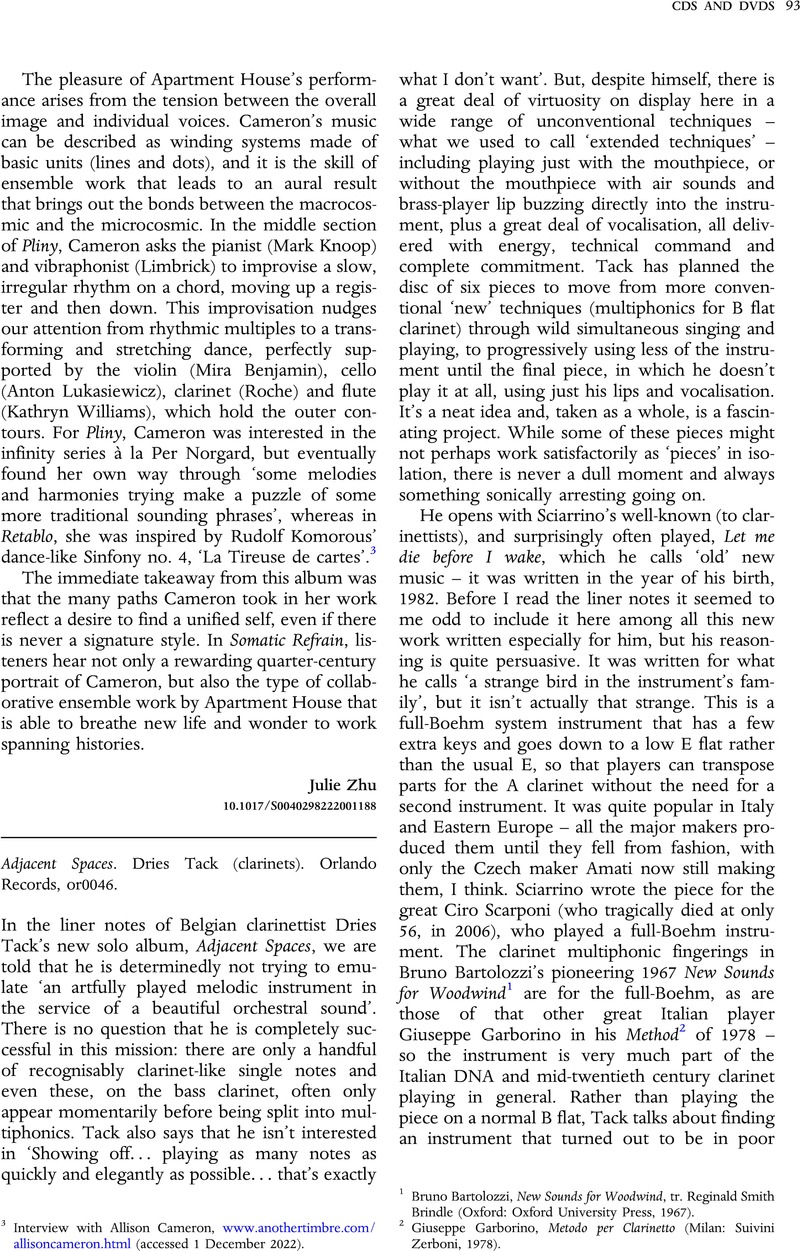No CrossRef data available.
Published online by Cambridge University Press: 03 April 2023

1 Bartolozzi, Bruno, New Sounds for Woodwind, tr. Brindle, Reginald Smith (Oxford: Oxford University Press, 1967)Google Scholar.
2 Garborino, Giuseppe, Metodo per Clarinetto (Milan: Suivini Zerboni, 1978)Google Scholar.
3 Some players play them all fast, which may be incorrect but often sounds much better, and it is much easier to control the fades in and out to silence. There is at least one commercial recording available like this.
4 malinbang.com/split-rudder/ (accessed 5 December 2022).